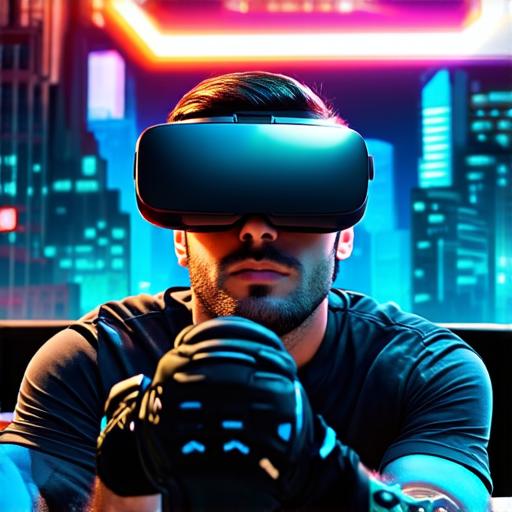
How Virtual Reality Operates
What is Virtual Reality?
Virtual reality (VR) is a computer-generated simulation that allows users to experience a three-dimensional environment as if they were really there. This is achieved through the use of specialized sensors and headsets that track the user’s movements and provide them with a realistic sense of presence in the virtual world.
The Science Behind Virtual Reality
Virtual reality operates through a combination of technology and psychology. At its core, VR involves creating a three-dimensional environment that the user can interact with in real-time. This is achieved through the use of specialized sensors and cameras that track the user’s movements and provide them with a realistic sense of presence in the virtual world.
One of the key components of VR is stereoscopic display, which involves presenting two slightly different perspectives to each eye in order to create a three-dimensional effect. This is achieved through the use of specialized headsets that have separate displays for each eye.

Another important aspect of VR is motion tracking, which involves using sensors and cameras to track the user’s movements and translate them into actions within the virtual world. There are several different types of motion tracking systems available, including optical, ultrasonic, and inertial systems.
Real-Life Applications of Virtual Reality
Virtual reality is being used in a wide range of industries, from gaming and entertainment to healthcare and education. Here are just a few examples:
- Gaming and Entertainment: Virtual reality has revolutionized the way we play games and experience movies and TV shows. With VR, users can step into their favorite movie or game and interact with the characters and environment in real-time.
- Healthcare: Virtual reality is being used to treat a variety of medical conditions, including anxiety disorders, PTSD, and chronic pain. By providing a safe and controlled environment for patients to confront their fears or manage their pain, VR can be an effective tool for improving mental and physical health.
- Education: Virtual reality is being used to create immersive learning experiences that allow students to explore complex concepts in a hands-on and engaging way. From virtual field trips to interactive simulations, VR can help make learning more fun and effective.
Challenges of Virtual Reality Development
Creating a virtual reality experience is not an easy task. Here are some of the challenges that developers face:
- Motion sickness: Many people experience motion sickness when using VR, which can make for a less-than-ideal user experience. Developers need to be mindful of this issue and take steps to minimize the risk of motion sickness.


